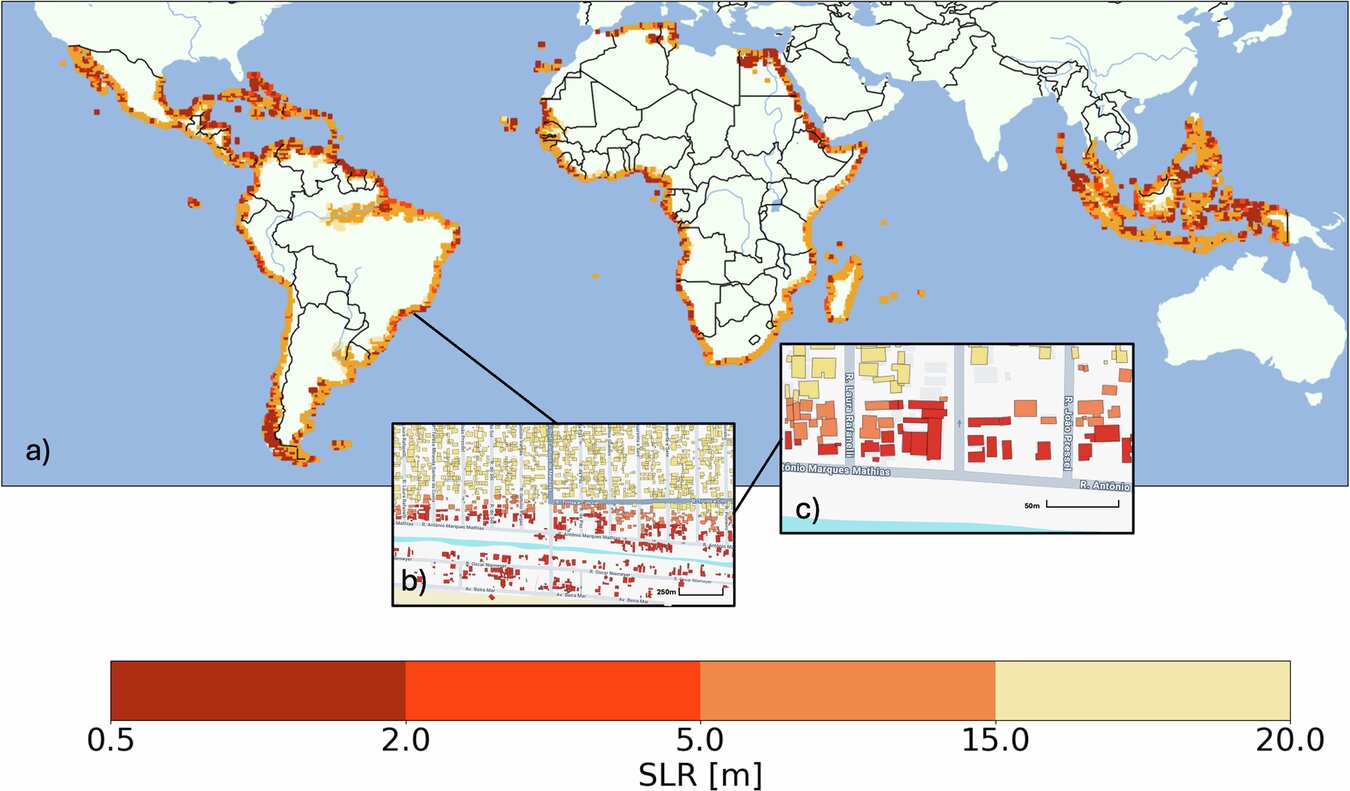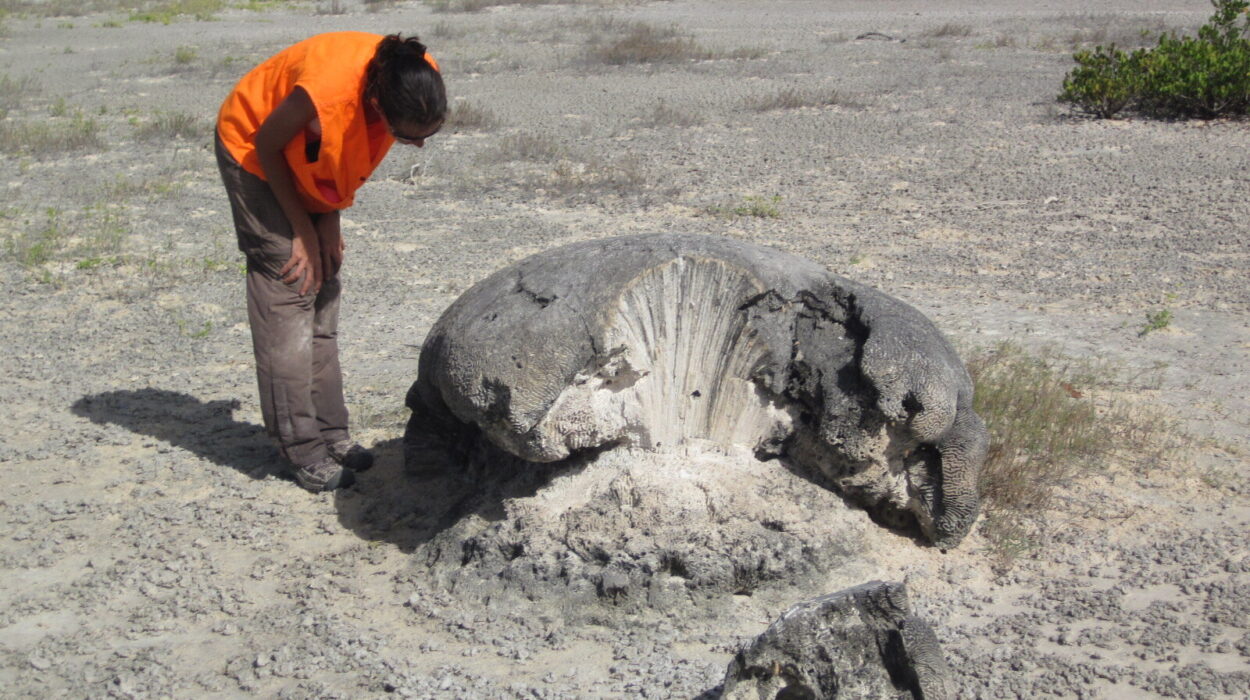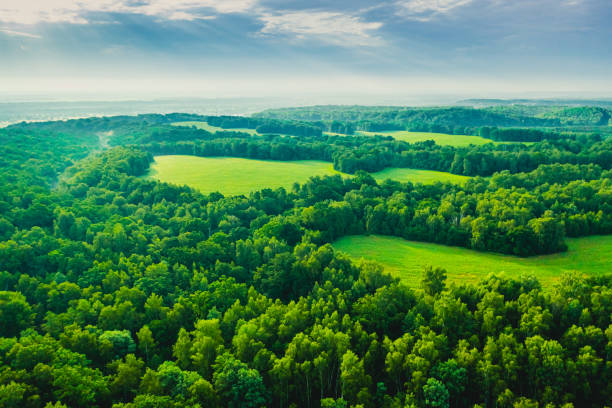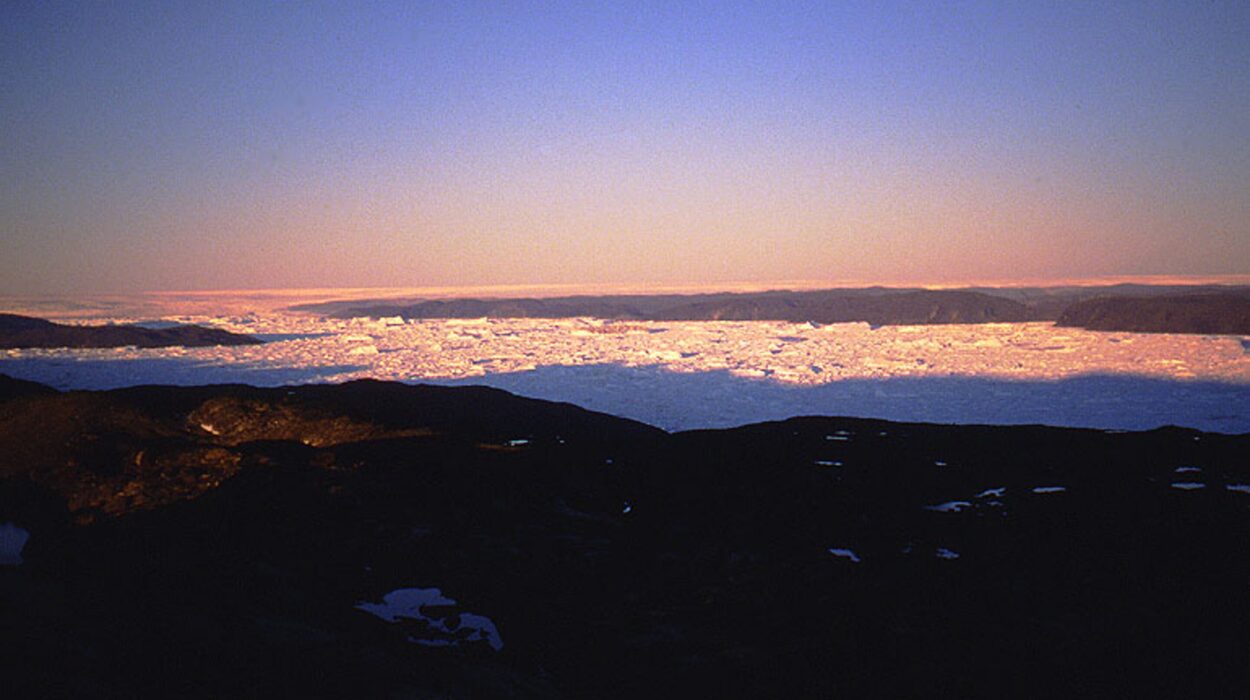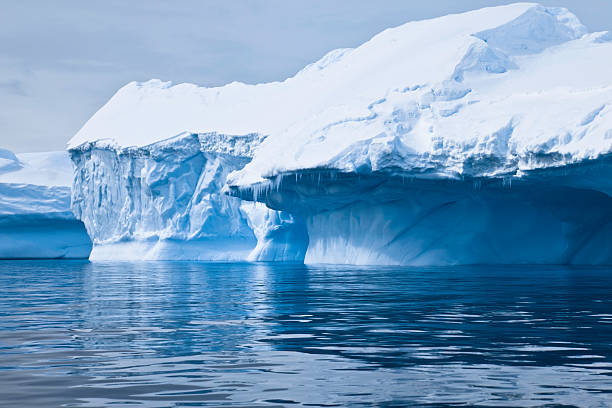When people imagine climate change, they often think of hurricanes tearing through coastlines, wildfires devouring forests, or droughts starving crops. But there is another danger—quieter, slower, yet every bit as unstoppable: the rising of the seas. Unlike a storm that comes and goes, sea level rise is a permanent transformation of our planet’s coastlines. Once the oceans rise, they do not recede on human timescales.
A new study published in npj Urban Sustainability by a team led from McGill University paints a sobering picture of what lies ahead. By combining satellite imagery with detailed elevation data, researchers created the first large-scale, building-by-building assessment of how long-term sea level rise will affect urban infrastructure in the Global South. Their findings suggest that unless fossil fuel emissions are curbed quickly, more than 100 million buildings—homes, schools, hospitals, businesses—could face regular flooding in the centuries to come.
The research highlights a truth we can no longer ignore: the choices humanity makes today will ripple through not just decades, but centuries of coastal life.
Why the Global South Is Especially Vulnerable
The Global South—spanning Africa, Southeast Asia, and Central and South America—sits at the frontline of climate risk. Many cities in these regions are located along low-lying coasts, estuaries, and river deltas. These areas are hubs of human settlement because they provide fertile land, access to trade routes, and rich ecosystems. Yet these very advantages now place millions at risk.
Unlike wealthier nations that can invest heavily in sea walls, flood defenses, and managed retreat programs, many countries in the Global South face financial and political challenges that make large-scale adaptation extremely difficult. This means that even modest levels of sea level rise could have devastating consequences for communities, economies, and cultural heritage.
When seas encroach upon a coastal village in Bangladesh, or a port city in West Africa, the impacts ripple far beyond local boundaries. These places are often deeply connected to global food, energy, and trade systems. Ports transport grain, oil, and goods across continents. Refineries and factories produce essential resources. If rising seas disrupt these nodes, the entire world feels the shockwaves.
More Than Just Centimeters
Public discussion of sea level rise often focuses on seemingly small numbers: 30 centimeters by mid-century, a meter by 2100. These figures can sound manageable, almost trivial. But the new McGill-led study reminds us that sea level rise does not stop at the end of this century—it continues for centuries after, especially if greenhouse gas emissions remain unchecked.
The study examined scenarios ranging from 0.5 to 20 meters of sea level rise, unfolding over multi-century timescales. At just half a meter—a level projected to occur even if global emissions are aggressively cut—around three million buildings could face flooding. If the world continues burning fossil fuels, however, five meters or more of rise is possible, pushing over 100 million buildings into the risk zone.
This is not just about numbers. It is about neighborhoods disappearing under the tide, families losing ancestral homes, and cultural landmarks vanishing beneath saltwater. It is about entire ways of life being rewritten by the slow but unyielding march of the sea.
Neighborhoods, Ports, and Heritage on the Line
One of the study’s striking findings is the wide range of exposure between countries. Some nations face relatively modest risks due to higher coastal topography, while others sit precariously at sea level. The difference of just a few meters in elevation can mean the survival or loss of millions of structures.
The consequences extend far beyond housing. Critical infrastructure—ports, refineries, airports, power stations—often sits directly along coastlines. These are the arteries of modern civilization. Disruption at a single port can choke food supplies or fuel trade disputes half a world away. Cultural heritage is also at risk: temples, monuments, and historic neighborhoods, many of which have stood for centuries, may be permanently lost.
As co-author Prof. Jeff Cardile explained, the sheer scale of exposure surprised even the researchers. It is not just sprawling megacities that are at risk, but countless smaller towns and rural communities whose livelihoods depend on coastal stability.
Why Planning Cannot Wait
The message of the study is clear: adaptation is not optional—it is urgent. While sea level rise cannot be fully stopped, its pace and scale can still be influenced by today’s actions. Cutting fossil fuel emissions drastically and immediately remains the most powerful lever to limit the damage.
But even under the best-case scenarios, millions of buildings will still be affected. That means societies must begin preparing now. Urban planners, policymakers, and local communities need to consider strategies ranging from protective infrastructure—like seawalls and surge barriers—to more difficult measures such as land use adjustments or managed retreat from the most vulnerable zones.
The research team has made its findings publicly accessible through an interactive map on Google Earth Engine. This tool allows decision-makers and citizens alike to visualize which regions face the greatest risks. Seeing your own neighborhood’s exposure can make the threat tangible in a way abstract numbers cannot.
As Maya Willard-Stepan, the study’s lead author, put it, “There is no escaping at least a moderate amount of sea level rise. The sooner coastal communities can start planning for it, the better chance they have of continuing to flourish.”
The Global Connection
It is tempting to think of sea level rise as a local problem, one that concerns only those who live near the shore. But as co-author Eric Galbraith pointed out, every person on Earth is tied to the coast in some way. The food we eat, the fuel we use, the goods we consume—all pass through coastal infrastructure. When ports flood, supply chains falter. When fisheries collapse, hunger spreads. When refineries are inundated, energy costs soar.
Sea level rise, then, is not just about water slowly creeping inland. It is about the potential unraveling of systems that bind the modern world together. It is about recognizing that the loss of a port in West Africa or a refinery in Southeast Asia is not a distant tragedy—it is a disruption that can echo into markets, economies, and lives across the globe.
A Human Story of Choices
At its core, the story of sea level rise is about choices. It is about whether humanity continues on a high-emissions path that locks in catastrophic change, or whether we seize the opportunity to bend the curve toward sustainability.
It is also about justice. Those most vulnerable to sea level rise are often the least responsible for the emissions driving it. Communities in the Global South have contributed the smallest share of greenhouse gases, yet they face the harshest consequences. This imbalance raises profound ethical questions: what do wealthier nations owe to those on the frontlines? How can the global community support adaptation efforts fairly?
Ultimately, this is a story not only of physics and geology but of humanity—of how we choose to face a slow-moving catastrophe. Will we act now, boldly and collectively, or will we delay until the tide has claimed more than we can ever replace?
The Rising Tide of Tomorrow
Sea level rise does not roar like a storm or blaze like a wildfire. It creeps. It inches forward, day by day, decade by decade. But its quiet persistence makes it no less dangerous. As the McGill-led study makes clear, the decisions humanity makes today will shape coastlines centuries from now.
Future generations may stand at water’s edge, looking back at the choices we made—or failed to make. They may ask why we did not act while there was still time, or they may thank us for having the foresight to preserve what we could.
The tide is rising. The science is clear. What remains uncertain is not whether the seas will rise, but how much, and how prepared we will be to face the world they reshape.
More information: M. Willard-Stepan et al, Assessing the exposure of buildings to long-term sea level rise across the Global South, npj Urban Sustainability (2025). DOI: 10.1038/s42949-025-00259-z
